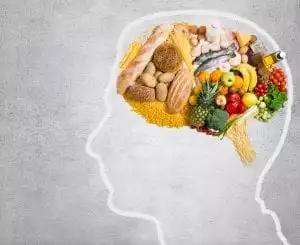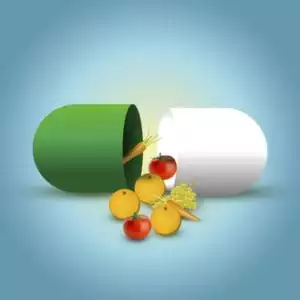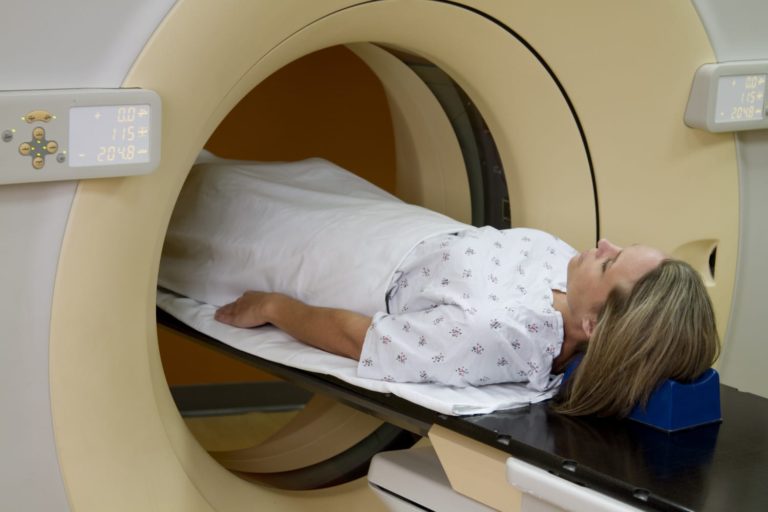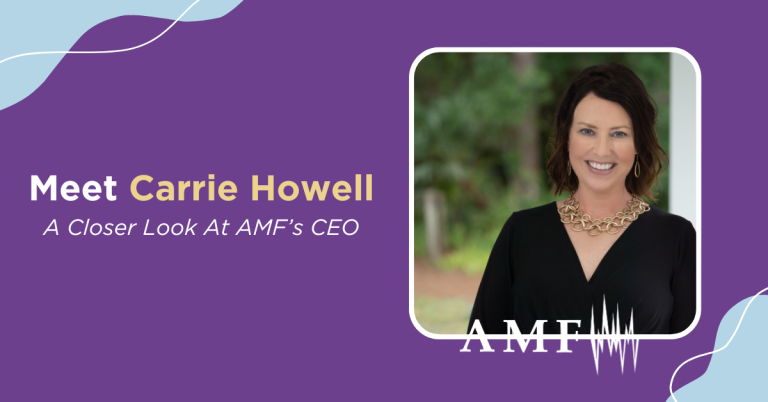Is there one specific type of diet that’s best for managing migraine? Learn about how nutrition, certain foods and dietary supplements may impact migraine symptoms.
Migraine is a common but disabling disorder that affects about 21% of all women and 10.7% of all men. Studies have shown migraine is a genetic disorder — however, factors like your environment, lifestyle and diet still play a large role in how often you get migraine attacks. While you are not going to stop all migraine attacks simply by following a specific diet, you may be able to reduce the frequency and severity of attacks by paying attention to your body’s specific dietary and nutritional needs.
Below we cover some key things to be aware of when it comes to nutrition, your diet and managing migraine.
Caffeine and Migraine: Morning Pickup or Daily Grind?
Does caffeine trigger migraine attacks or is it an effective headache treatment? The answer is, it’s complicated. For some people, small amounts of caffeine can relieve headache pain. For example, patients often report that a coffee or soda helps reduce head pain during a migraine attack. Caffeine is also a common ingredient in over-the-counter (OTC) headache medicines, and some people note that medicines with caffeine are more helpful than those without.
However, caffeine is a drug, and like many other drugs, it can cause problems when overused. Using more than 100 mg of caffeine in either medicines or beverages daily (about the amount in one 8 oz cup of coffee) is a known risk factor for developing daily headache. Additionally, regularly consuming excessive amounts of caffeine or frequently using OTC pain relievers containing caffeine can lead to medication overuse headache, also known as “rebound” headache.
Some suggestions for caffeine use in people living with migraine and other headache disorders:

- People with episodic migraine should limit caffeine intake to one or two beverages daily.
- People with daily headaches should consider avoiding caffeine completely.
- Limit the use of caffeine-containing medications to no more than two days per week.
- If you typically consume a lot of caffeine, try to reduce your caffeine intake slowly (by 25% each week) to avoid caffeine withdrawal symptoms.
- The amount of caffeine in different brands and types of coffee varies widely, from 133 mg of caffeine in a large McDonald’s coffee to 415 mg in a venti Starbucks. The same is true for different medicines. Consider looking up and tracking your daily caffeine use based on the specific beverages and medications you consume.
- Caffeine is probably not the only cause of frequent migraine attacks, but reducing caffeine often helps improve headache symptoms.
Scher AI, Stewart WF, Lipton RB. Caffeine as a risk factor for chronic daily headache: a population-based study. Neurology. 2004; 63(11): 2022-27.
Caffeine Content of Food & Drugs. (November 2014). Retrieved from http://www.cspinet.org/new/cafchart.html on December 7, 2015.
Hunger and Headache
People with migraine often note that missing meals can trigger headaches. Long periods of time between meals may trigger migraine attacks or cause headaches to be more severe due to low blood glucose levels. Additionally, the risk of developing a headache increases with the amount of time between meals.
If you are living with migraine, be sure to make time for small, frequent meals. In addition to regular sleep schedules and exercise, regular daily meal times are associated with less frequent migraine attacks.
Dietary Migraine Triggers
Specific foods have often been thought to trigger migraine attacks in the past. For example, some commonly reported migraine triggers include alcohol (especially red wine and beer), chocolate, aged cheese, cured meats, smoked fish, yeast extract, food preservatives that contain nitrates and nitrites, artificial sweeteners, and monosodium glutamate (MSG).
However, evidence for foods triggering migraine attacks is actually rare, and doctors now think that many commonly accepted food “triggers” are more likely food cravings experienced during the prodrome phase of an attack. Additionally, it’s important to remember that migraine attacks are often due to multiple factors. When you’re already stressed, not sleeping well, or not exercising, certain dietary factors may make it more likely to have a migraine attack — but in this case, it is the combination of all of these different things that contribute to the attack, not just one specific food.
Remember, different people have different dietary needs, so things that trigger one person’s migraine attacks may have no effect on someone else. Here are some suggestions for determining whether specific foods or types of diets tend to increase your risk of migraine attacks:
- Keep a food diary along with your headache journal to help identify any consistent patterns or changes in your diet before migraine attacks.
If you think a specific food is triggering migraine attacks, talk to your doctor about whether you should try avoiding that food for a while, monitoring your symptoms to see if they improve.
Be careful about trying extremely strict diets. You may end up avoiding foods that are not migraine triggers and missing out on important nutrients.
Sun-Edelstein C and Mauskop A. Foods and supplements in the management of migraine headaches. Clin J Pain 2009; 25: 446-452.
Eliminating the Elimination Diet
Researchers have looked at whether or not avoiding specific types of foods entirely, also known as elimination diets, can help manage migraine. There has been evidence to suggest that certain dietary limitations may help children who have migraine attacks, but the same is not true in adults. Still, even with very little proof, some people suggest that eating a simple, bland diet will stop attacks from happening.
The truth is that such rigid diets — especially those that eliminate many common foods — have not been shown to effectively prevent migraine attacks. For this reason, doctors will usually not recommend elimination diets to reduce migraine frequency unless many other evidence-based treatments have failed. In some rare cases, elimination diets (under medical supervision) may be considered as part of a comprehensive approach to identify and reduce migraine triggers. However, these diets should only be attempted with medical and nutritional support to ensure you are still getting adequate nutrients.
Egger J, Carter CM, Wilson J, et al. Is migraine food allergy? A double-blind controlled trial of oligoantigenic diet treatment. Lancet 1983; 2: 865-869.
Bunner AE, Agarwal U, Gonzales JF, et al. Nutrition intervention in migraine: a randomized cross-over trial. The Journal of Headache and Pain. 2014; 15:69.
Healthy Eating for a Healthy Head
The U.S. Department of Health and Human Services Dietary Guidelines for Americans (DGA) makes food recommendations to help you live a healthier life. While these guidelines are not tailored to people with migraine specifically, they are helpful in maintaining a healthy and balanced diet, which can reduce the frequency of migraine attacks.
Some DGA recommendations include:
- Aim for half of your grains to be whole grains. Whole grains have more fiber and vitamins. Try to substitute things like white bread, white rice, and pasta in your diet with whole grains instead.
- Try to maintain a high level of fruits and vegetables in your diet. As a general guideline, half your plate should be fruits and vegetables every meal. Remember also to eat a variety of each.
- Aim to eat healthy fats rather than restricting yourself to a low fat diet. Limit “saturated” and “trans fats” when possible. Try to increase seafood consumption to two to three times per week to get enough omega-3 fats.
- Limit sodium to less than 2300 mg per day. Most salt in our diets comes from processed foods (heat-and-eat frozen meals, canned soups, and ready-to-eat snacks like chips and crackers). Cook from scratch or choose foods labeled “low sodium” whenever possible.

In addition to some of the basics of a healthy diet, there are a few additional things to keep in mind if you have migraine:
- Don’t skip meals, as this can increase your risk of migraine attacks.
- Don’t forget to fuel up your brain for the day with breakfast! Try to eat a high-protein breakfast within 30-60 minutes of waking up in the morning.
- Consider eating five small meals per day. Try to include a carbohydrate, a protein and a healthy fat in each small meal to stay full longer.
- Don’t eat or drink anything that you know triggers migraine attacks for you.
- Drink water throughout the day instead of sugary drinks like soda or juice.
Rockett, F. C. et al. Dietary aspects of migraine trigger factors. Nutr. Rev. 70, 337–356 (2012).
Urinary & Kidney Team. What The Color of Your Urine Says About You (Infographic). Health Essentials from Cleveland Clinic. http://health.clevelandclinic.org/2013/10/what-the-color-of-your-urine-says-about-you-infographic/. Accessed November 10, 2015
Dietary Supplements for Migraine Prevention
Many people with migraine have tried using minerals, herbs and vitamins to treat their headaches at some point or another. People may have different reasons for using supplements, including that they are more natural alternatives to medication or do not require a prescription.
Because these complementary and alternative treatments can affect pain pathways and other body functions similar to prescription medications, it is important to be aware of the medical research around these supplements, including potential side effects and the quality of evidence supporting their use for migraine prevention. Additionally, you should talk to your doctor if you plan to use any supplements, and keep in mind that it can take two to three months of consistent use to see benefits. Additionally, women who are pregnant or considering pregnancy should talk to their doctor prior to using any supplements for migraine.
Riboflavin (vitamin B2)
Riboflavin (vitamin B2) was studied in a few small trials and found to be potentially helpful in preventing migraine in adults. However, two pediatric studies with riboflavin did not show any benefit in children. Even though clinical trials haven’t yielded strong evidence on riboflavin use, both the American Academy of Neurology (AAN) and the Canadian Headache Society recommend its use in adults with migraine because it is well tolerated and side effects are limited and mild. Some people may experience diarrhea or frequent urination, and it’s common to see bright yellow urine when taking riboflavin. The recommended dose in adults is 400 mg of riboflavin per day, and it can take at least two to three months to see any benefit.
Coenzyme Q10 (CoQ10)
Coenzyme Q10 (CoQ10) is an antioxidant that is important for many basic cell functions. It has also been studied in migraine prevention. Based on the available studies, the AAN considers CoQ10 to be possibly helpful in migraine prevention (level C evidence). Canadian Headache Society guidelines strongly recommend CoQ10 despite current low-quality evidence because it is well tolerated in most people. Side effects of CoQ10 are rare and can include loss of appetite, upset stomach, nausea and diarrhea. Adults typically use 100 mg three times a day, and while the best dose in children is not clear, it is frequently suggested to use one to three mg per kg of the child’s weight. Similar to riboflavin, it can take up to three months to see any benefits of CoQ10.
Magnesium
Magnesium is a mineral that is important for a number of body functions, and it has been found to bind to specific receptors in the brain involved in migraine. Low brain magnesium has been associated with migraine aura. Studies suggest magnesium supplements can be helpful for people with migraine with aura and menstrually-related migraine. Both the AAN and Canadian guidelines recommend its use for migraine prevention, either as oral magnesium citrate (450-600 mg daily) or by eating more magnesium-rich foods.
Petasites (Butterbur)
Petasites, found in herbs from the butterbur shrub, have been shown to be helpful in reducing migraine frequency in three randomized, placebo-controlled studies. In these studies, the optimal dose was 150 mg per day, and it took three months to see headache improvement. For that reason, it has been deemed effective in preventing migraine by the AAN.
However, because of a rare but serious risk of liver toxicity, it has been removed from the market in many European countries. Many headache experts in the United States and Canada have also stopped recommending its use.
Feverfew
Feverfew is an herb sometimes used in migraine prevention. However, there have only been a limited number of studies on feverfew and migraine, and they have yielded conflicting results. The AAN guidelines give feverfew a second-line, level B recommendation for migraine prevention, supporting the idea that it is probably helpful. Side effects can include abdominal pain, nausea, vomiting and diarrhea. Chewing raw feverfew can cause mouth sores, loss of taste and swelling of the lips, tongue and mouth. Feverfew can also increase the risk of bleeding, especially in individuals already on blood-thinning medications or aspirin. Feverfew should not be used during pregnancy.
Tepper SJ. Neutraceutical and other modalities for the treatment of headache. Continuum 2015; 21(4): 1018-1031.
Weight Management for People With Migraine
Maintaining a healthy weight can help reduce the risk of migraine attacks, and being overweight has been shown to increase the likelihood of having migraine or of worsening symptoms.
To see how your weight compares to general body mass index (BMI) guidelines, you can enter your height and weight to learn your BMI here:
- If your BMI is between 18.5–24.9, your weight is considered healthy. You should aim to keep your weight stable by maintaining a healthy diet and exercising.
- If your BMI is between 25.0–29.9, you may be considered overweight. Obesity is marked by a BMI of 30.0 or above.
If your BMI is over 25, your migraine symptoms may improve if you lose weight. You should confirm this with your doctor and talk about healthy weight loss methods that will work for you.
Some healthy weight loss plans include low-calorie diets and exercise, low carbohydrate diets, and weight loss surgery. Weight loss surgery may be an option if your BMI is greater than 35, depending on your overall health. Since there is no “best” weight loss method for migraine, you should work with your doctor to find a method that meets your needs while allowing you to stay healthy.
Here are a few special weight loss tips if you have migraine:
- Do not skip meals to lose weight, as this can trigger migraine attacks.
- Try eating five small meals per day or adding small, healthy snacks between meals to help you feel full throughout the day.
- Drink water throughout the day. Staying hydrated helps reduce the risk of headaches and also helps you feel full between meals.
- Make sure you have a strong social support system. Tell your family and friends why you’re trying to lose weight and how they can support you. Try to find a “weight loss buddy” to share your experiences with.
Jahromi SR, Abolhasani M, Meysamie A, Togha M. The effect of body fat mass and fat free mass on migraine headache. Iran J Neurol. 2013;12(1):23.
Leidy HJ, Campbell WW. The Effect of Eating Frequency on Appetite Control and Food Intake: Brief Synopsis of Controlled Feeding Studies. J Nutr. 2011; 141(1): 154-157. doi:10.3945/jn.109.114389.
National Heart Lung and Blood Institute, National Institutes of Health. Calculate your Body Mass Index. http://www.nhlbi.nih.gov/health/educational/lose_wt/BMI/bmicalc.html
Ornello, R et al. Migraine and body mass index categories: a systematic review and meta-analysis of observational studies. J. Headache Pain 16, (2015).
Verrotti A, Agostinelli S, D’Egidio C, et al. Impact of a weight loss program on migraine in obese adolescents. Eur J Neurol. 2013; 20(2): 394-397. doi:10.1111/j.1468-1331.2012.03771.x.
Thank you to Rashmi Halker, MD, FAHS; Jessica Ailani, MD, FAHS; Carrie Dougherty, MD, FAHS; and Margaret Slavin, PhD, RD for their contributions to this spotlight!










































































